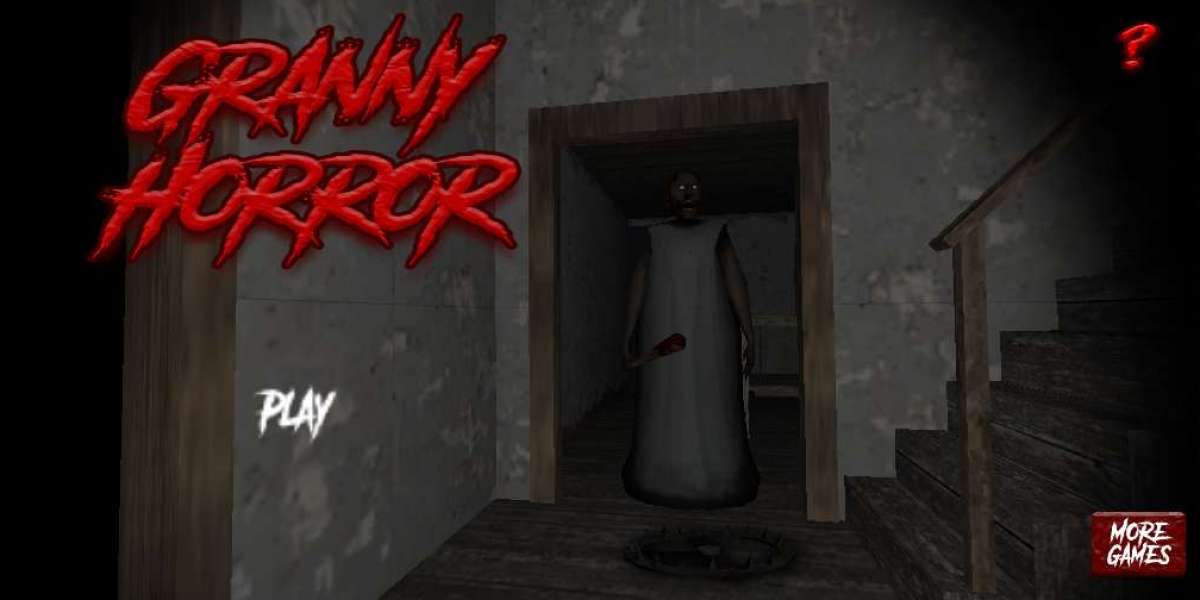Unlike some horror titles that rely heavily on jump scares or cinematic cutscenes, Granny places you in a tense, claustrophobic environment and forces you to survive using wit, stealth, and resourcefulness.
In this article, we will dive deep into the world of Granny—exploring its gameplay, storyline, mechanics, strategies, and why it has become such a cult classic among horror game fans.
1. The Premise of Granny
The concept of Granny is deceptively simple. You wake up in a small, dark room inside a house. You quickly realize you’ve been captured by an elderly woman known only as “Granny.” She isn’t the sweet, cookie-baking grandmother you might imagine—she’s a sinister figure with heightened hearing, a violent temper, and a relentless desire to keep you from escaping her home.
Your main objective is to escape the house. You have five days (five in-game attempts) to do so before Granny decides your time is up. Each “day” represents a new chance to explore, find useful items, and progress toward unlocking the exit. However, with every move you make, Granny listens for noise—drop an object, step on a creaky floorboard, or bump into furniture, and she will come running.
2. Setting and Atmosphere
The game’s success heavily relies on its atmosphere. The house is dark, dusty, and filled with creaky furniture, hidden passages, and ominous traps. Dim lighting forces you to rely on a flashlight, and shadows often play tricks on your mind. Ambient sound design is equally unsettling—random footsteps, the echo of Granny’s bat hitting the floor, and her chilling voice whispering “Where are you?” are enough to make any player’s skin crawl.
This immersive environment is one of the game’s strongest features. It creates constant tension, making you afraid not only of Granny herself but of the space you’re trapped in. The fear of making even the smallest mistake is what keeps players deeply engaged.
3. Gameplay Mechanics
Granny blends elements of stealth, puzzle-solving, and survival horror.
3.1 Movement and Stealth
You can walk, crouch, or run, but each action comes with a trade-off. Running gets you places faster but makes more noise; crouching keeps you quiet but slows you down. The player’s movement speed is a strategic choice depending on Granny’s location and your urgency.
3.2 Noise Sensitivity
Noise is the central mechanic in Granny. Every dropped item, opened door, or stepped-on object can alert Granny. Even seemingly harmless actions, like opening a cabinet too fast, can give away your position.
3.3 Items and Tools
To escape, you must gather tools and keys scattered around the house. Examples include:
Hammer – Break planks blocking pathways.
Padlock Key – Unlock the main door.
Cutting Pliers – Disable wiring.
Weapon Key – Access the crossbow or shotgun for temporary defense.
These items spawn in random locations with each new game, ensuring replayability and preventing players from memorizing exact routes.
3.4 Hiding Spots
You can hide under beds, inside wardrobes, or behind doors. These hiding spots are crucial when Granny is chasing you, but they are not completely safe—if she suspects you are hiding nearby, she might check.
3.5 Traps and Hazards
Beyond Granny herself, the house is filled with traps such as bear traps, locked doors, and hidden hazards. You must learn the layout to avoid getting caught.
4. The Five-Day Countdown
Every time Granny catches you, you lose a day. When you’re caught, you wake up in the starting room, sometimes with new obstacles or increased difficulty. By the fifth day, tension peaks—the environment becomes more dangerous, and your margin for error is practically nonexistent. If you fail on the fifth day, the game ends with a grim cutscene showing your fate.
5. Strategies for Survival
Surviving Granny requires patience, planning, and quick thinking. Here are some common strategies players use:
5.1 Learn the House Layout
Knowing the location of key rooms, escape routes, and hiding spots is vital. Many players spend their first attempts simply exploring and mentally mapping the area.
5.2 Use Noise as a Distraction
Sometimes making noise intentionally can lure Granny away from critical areas. For example, you can knock over a vase in one room, then quickly slip into another to retrieve an item.
5.3 Prioritize Essential Items
Don’t waste time on items you don’t need immediately. If you find a crucial tool like the cutting pliers, focus on using them right away before picking up anything else.
5.4 Keep Calm During Chases
Panicking often leads to mistakes. When Granny spots you, have a plan—whether it’s running toward a hiding spot or circling the house to lose her.
6. Difficulty Modes and Replayability
Granny offers multiple difficulty levels: Practice, Easy, Normal, Hard, and Extreme. In Practice Mode, Granny is absent, allowing players to explore freely. On Extreme, Granny moves faster, sets more traps, and leaves less room for error. The random item placement ensures that no two playthroughs are identical, making the game highly replayable.
7. Psychological Horror and Player Impact
Unlike many horror games that rely on graphic violence, Granny thrives on psychological terror. The fear comes from being hunted, from knowing that one small mistake can end your progress. Players often report feeling real tension and even elevated heart rates during gameplay. This emotional impact is a big part of why the game remains memorable.
8. Community and Popularity
Since its release, Granny has become a sensation in the mobile gaming world. YouTube and Twitch content creators helped boost its popularity, as viewers enjoy watching others panic and strategize in real time. The game’s simple yet terrifying premise makes it entertaining to both play and watch.
Its success also led to sequels and spin-offs, expanding the universe and adding new characters, settings, and challenges.
9. Granny’s Backstory and Fan Theories
The game itself offers little backstory about Granny, which has led to a flood of fan theories. Some players speculate she was once a normal grandmother who became possessed or corrupted. Others believe she’s part of a larger horror family hinted at in DVloper’s other games, like Slendrina. This mystery adds another layer of intrigue, keeping players guessing about her true origins.
10. Why Granny Works as a Horror Game
There are a few core reasons why Granny succeeds in keeping players hooked:
Simplicity – The controls and objectives are straightforward, making it accessible.
Tension – The constant threat of Granny’s presence maintains suspense.
Replay Value – Randomized item placement keeps the game fresh.
Emotional Engagement – The fear of failure makes victories extremely satisfying.
Conclusion
Granny may not have the high-budget graphics or sprawling open worlds of modern horror titles, but what it lacks in production scale, it more than makes up for in tension, clever mechanics, and atmosphere. Its blend of stealth, puzzle-solving, and relentless pursuit creates an unforgettable horror experience that has cemented its place in gaming culture.
Whether you’re a seasoned horror gamer or a newcomer looking for a thrill, Granny delivers a unique challenge: survive five days in a nightmare where every step could be your last. Just remember—stay quiet, stay alert, and whatever you do… don’t let Granny hear you.



